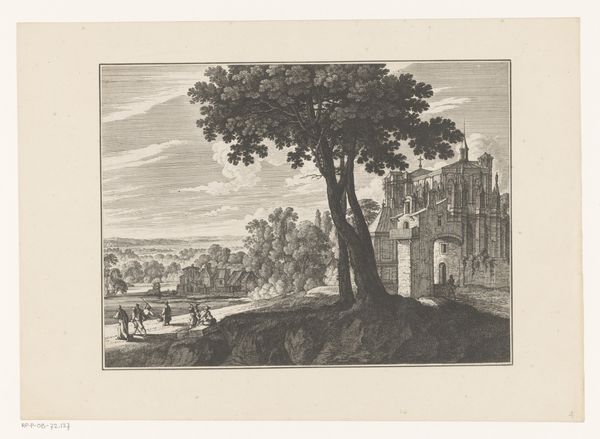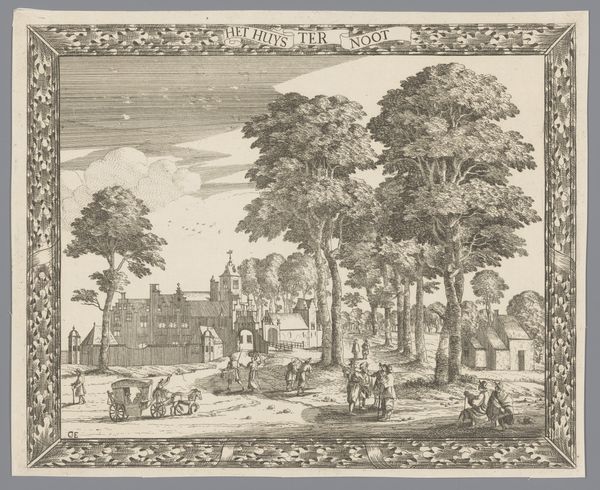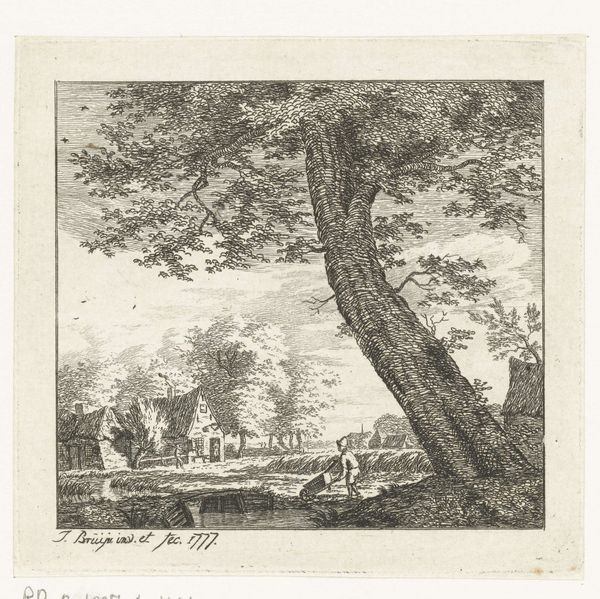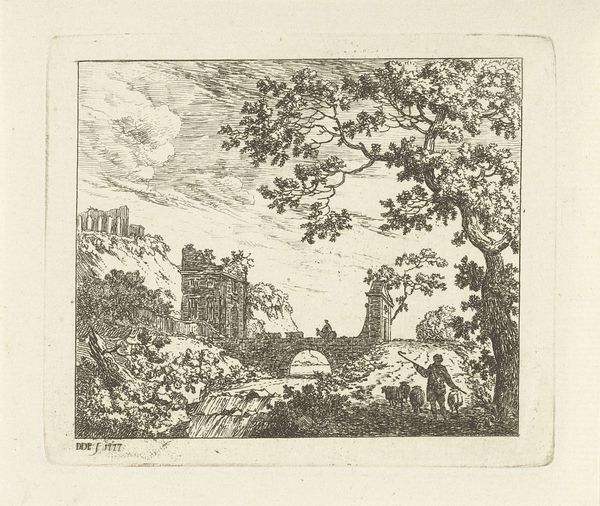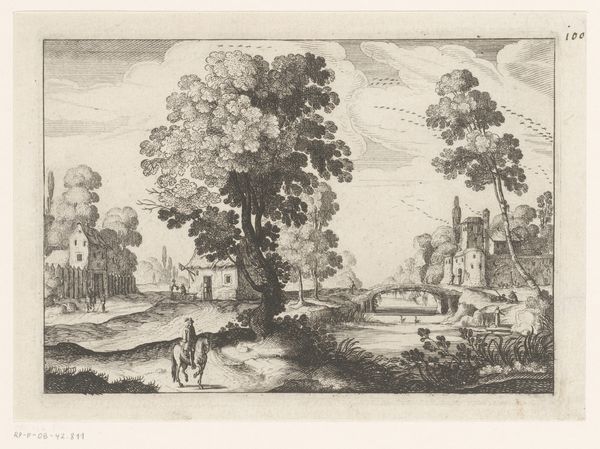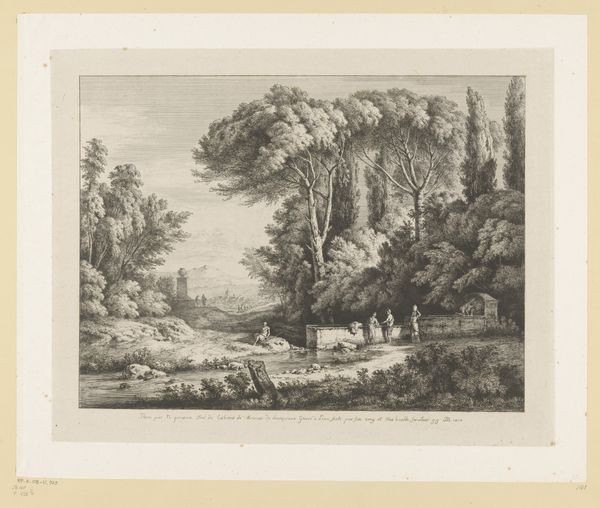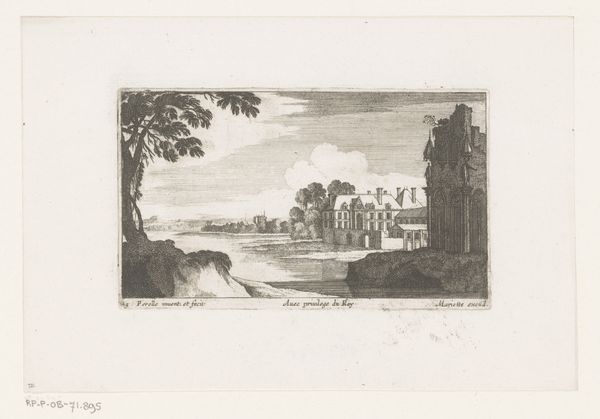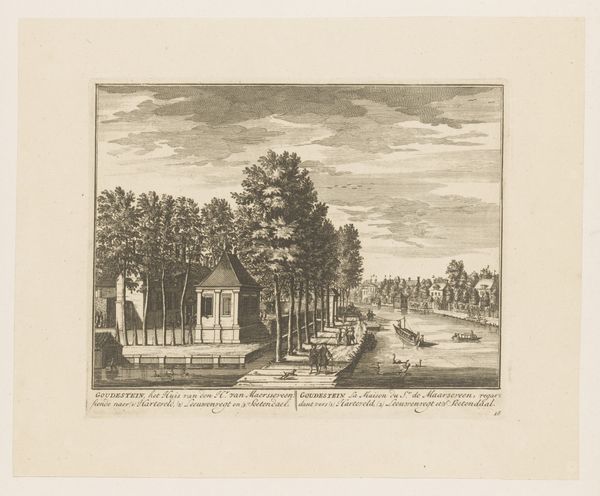
print, engraving
#
baroque
#
pen drawing
#
dutch-golden-age
# print
#
landscape
#
cityscape
#
engraving
Dimensions: height 229 mm, width 281 mm
Copyright: Rijks Museum: Open Domain
Cornelis Elandts made this print, Gezicht op Huis Honselaarsdijk, around the 1670s. The artwork captures a slice of Dutch Golden Age life, focusing on the grand Huis Honselaarsdijk palace, and thus providing a glimpse into the era’s social hierarchy. The image constructs meaning through a careful arrangement of visual elements. The palace, a symbol of wealth and power, dominates the background. The road with its figures offers a snapshot of Dutch society: an upper-class family in a carriage, and men on foot. It subtly reinforces the era's socio-political structure. Consider the institutional context: Dutch printmaking flourished during this time, driven by a prosperous economy and a demand for images. Prints like these served as both documentation and celebration of Dutch achievements. As art historians, we dig into period documents – estate records, travel logs, and other prints – to better understand this image's historical meaning. This helps us see art as a product of its time, not separate from it.
Comments
No comments
Be the first to comment and join the conversation on the ultimate creative platform.
